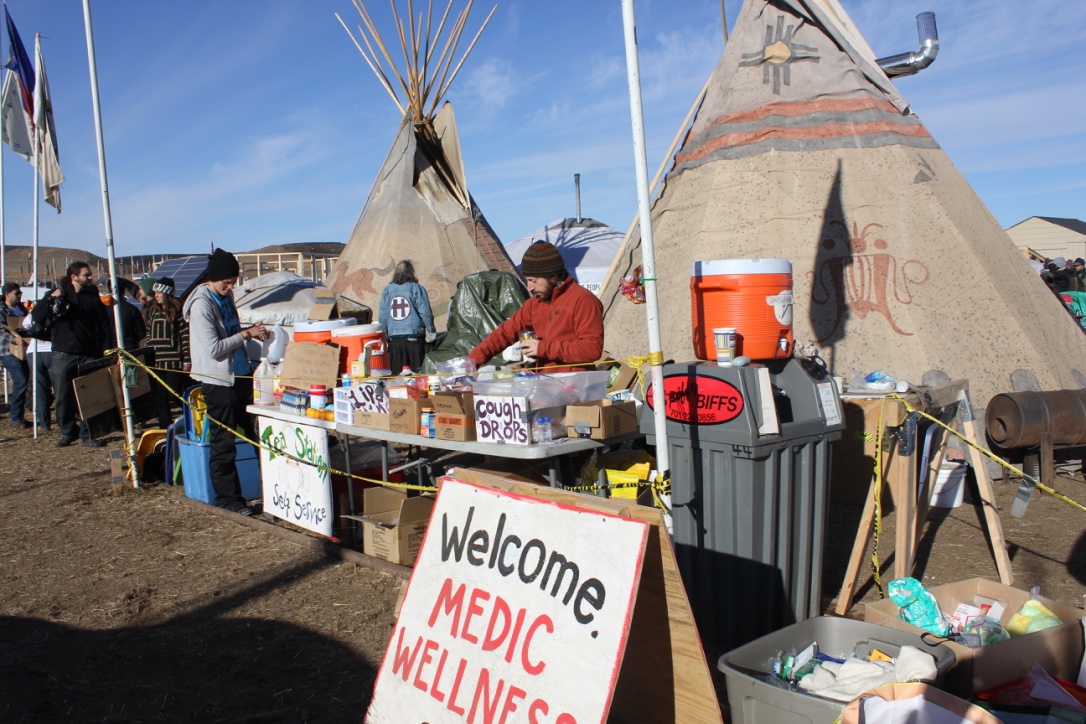Becca Starr
Grand Prize Winner
Read MoreEssay







Eric Toennis
Read MoreJordan Finn
Read MoreJordan Finn
Read MoreJordan Finn
Read MoreTeepees, canvas tents, RVs, yurts, corrals, moving vans, and adapted buses pepper the camp known as Oceti Sakowin. The white geodesic dome is a donation from Burning Man, and serves as a communal space for meals, orientation meetings, action meetings, and a nightly discussion of decolonization. It also provides sleeping space for campers unprepared for cold weather.
A camper fills propane tanks for his comrades.
Volunteers organize the many winter coats donated to Standing Rock in preparation for winter.
Protesters drop off food donations outside a community mess mall as the camp stocks up for winter.
Various repurposed buses serve as shelter and other facilities for campers.
Protesters are building more permanent structures in the camp, using cardboard and plastic bottles as insulation against the immanent ND winter. A small solar panel peeks out on the left side of the picture.
A camper puts honey in his tea on the edge of the camp’s medical facility.
Cars line up at the north entrance of Oceti Sakwin camp on Black Friday.
Abram Loeb, came from Binghamton, NY in his vegetable oil-powered truck to show support for the Standing Rock tribe.
Jerica Maditz, of MA, feeds her horse named “Chota,” a Lakota mustang. In the background, “Media Hill” or “Facebook Hill,” where campers receive adequate cell service to use their phones. Maditz suffered from mild frostbite after participating in a Nov. 23 conflict with police, when they sprayed protesters with water cannons in subfreezing temperatures. Police have also used pepper spray, tear gas, concussion grenades, sound cannons, rubber bullets, and attack dogs to subdue so-called “water protectors.”
Security lights to the northeast of Oceti Sakowin face the camp from dusk till dawn, serving as an intimidation measure.












Phillip Griffin
Read MoreEric Toennis
Read MoreJordan Finn
Read MoreJordan Finn
Read More